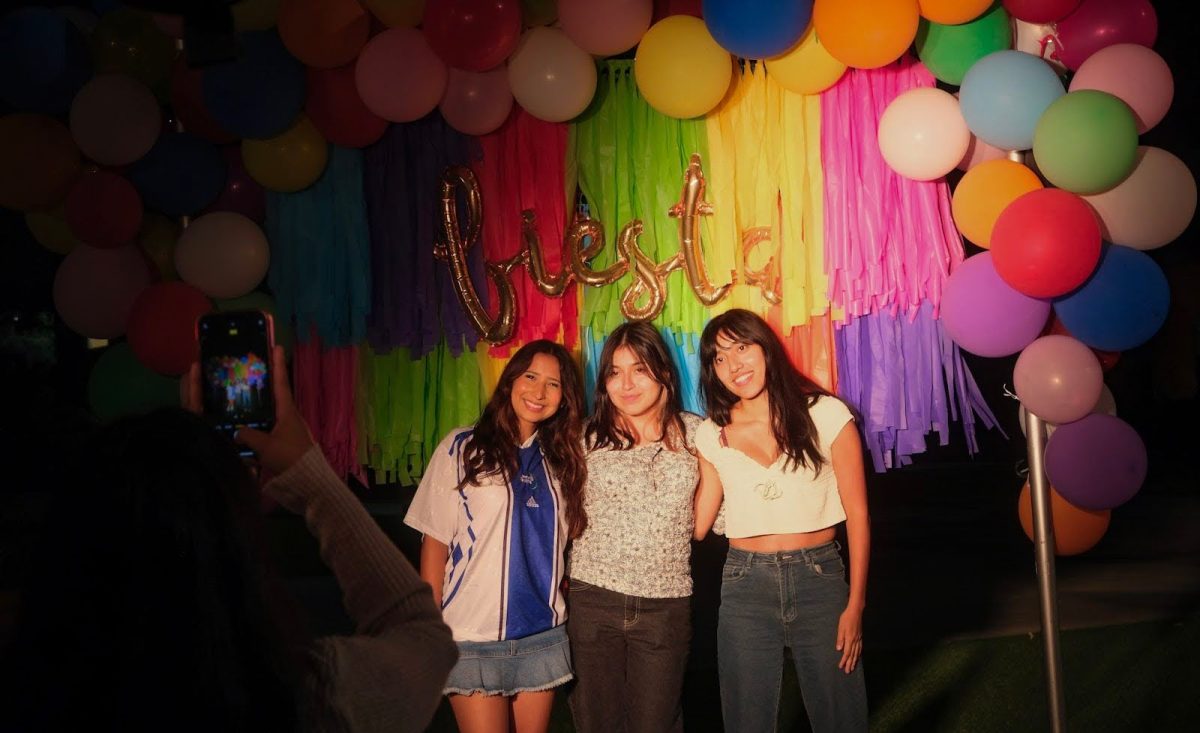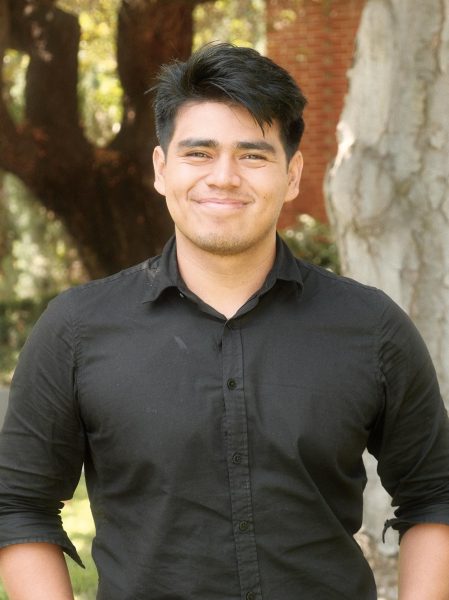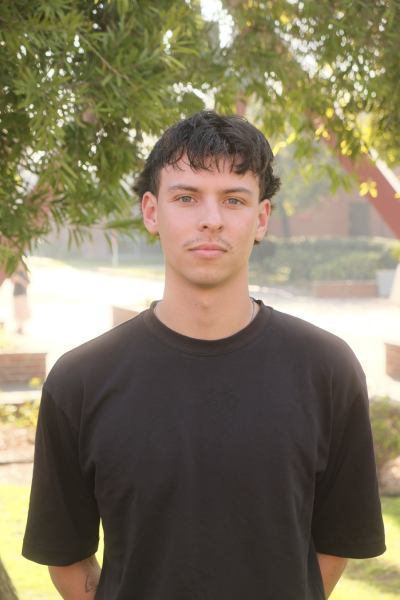I accidentally stumbled upon Fiesta Latina during my freshman year at Biola in 2021. I was coming back from an evening class, heading to the Student Union Building (SUB), hoping to get the next day’s homework done. From a distance, I heard the sound of music and cheer coming from the SUB area. I eventually made my way to the Fireside Pavillion and was taken aback by the sight of about 100 students taking part in the celebratory activities that included dancing and enjoying traditional Latino foods.
The music, decorations and many of the traditional dishes like tamales, pupusas and taquitos reminded me of my culture and family. Fiesta Latina reminded me of home.
As we celebrate Hispanic Heritage Month this year, I invite the Biola community to reflect more deeply on Hispanic heritage and culture on campus and how Fiesta Latina plays a significant role in fostering belonging and inclusivity.
There is a gap between Hispanic heritage and culture and the Biola community.
Hispanic heritage and culture is distinct from Biola culture. Sometimes this distinction fosters rich cultural exchange. Other times, it results in Hispanic students experiencing cultural isolation, imposter syndrome and a difficulty finding community.
Fiesta Latina is an annual community event, organized by Campus Engagement (OCE) celebrating Hispanic Heritage Month, that showcases the countries and cultures represented within the Hispanic community by featuring food, music, dance, and art.
Fiesta Latina addresses the gap between Hispanic culture and Biola experience through its emphasis on both celebration and education.
HISPANIC HERITAGE OF SOUTHERN CALIFORNIA
Growing in knowledge and appreciation of Hispanic heritage and culture is important for the entire Biola community because of Biola’s location.
Biola University is located in the city of La Mirada, one of dozens of cities that form greater Los Angeles County. The greater Los Angeles area is often regarded as the most diverse region in the United States; well over 224 languages are spoken in this region of around 10 million residents. Data from the Census Bureau shows that about 48.7% of L.A. County’s population identifies as Hispanic.
In addition, California as a state is forever intertwined with Hispanic heritage and culture. Originally named “Alta California,” California was a Mexican state from Mexico’s independence in 1822 to the Treaty of Guadalupe Hidalgo in 1848. Since then, Mexican culture and heritage have especially been a predominant part of the California culture and way of life. Biola is, without a doubt, surrounded by Hispanic heritage and culture.
Students need to have some understanding and appreciation of Hispanic culture in order to properly interact with the people and the culture of Southern California. Hispanic heritage has profoundly shaped life in Southern California including food, language, politics, sports and entertainment.
BIOLA’S HISPANIC STUDENTS
Hispanic students constitute a sizable minority of the Biola undergraduate population. Biola’s Common Data Set from the 2023-2024 school year shows that about 23% of Biola’s undergraduate student body identifies as Hispanic or Latino. Still, their stories and experiences are important to the flourishing and growth of the entire Biola community
Hispanic cultural elements and lived experiences — including cuisines, traditions, language, family dynamics, social structures and spiritual life — can be distinct from the general Biola community.
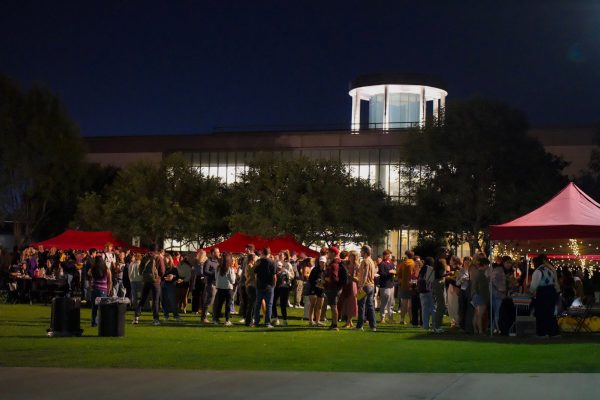
HOW FIESTA LATINA “MINDS THE GAP”
This year’s Fiesta Latina marks 15 years since the first Fiesta Latina in 2009. Some Hispanic students are skeptical about the event, believing that it falls short of properly celebrating and honoring the Hispanic community. They argue that the event is unable to represent all Hispanic countries. Others highlight how the event itself seems superficial and does not go deep enough.
I invite the Hispanic community, as well as the greater Biola community, to consider Fiesta Latina as the starting point and an invitation to a deeper understanding and celebration of Hispanic heritage. Fiesta Latina truly minds the gap between elements of Hispanic heritage and the greater Biola community by focusing on celebration and education.
“[For] each of the Heritage events, the point is, yes, for the students of that [culture] to feel like the university cares about them,” stated Emily Propst, the graduate assistant of community life at OCE.
Fiesta Latina educational activities provide an opportunity for non-Hispanic students to grow in their understanding of the heritage and culture that is so important to the identity of their Hispanic classmates and colleagues.
“We recognize that students come to Biola from everywhere, and maybe they lived in like a random state that was not diverse at all, and they’ve never encountered a Latino student ever,” Propst said.
It is this two-part approach: celebration, and education, that helps mind the gap between Hispanic heritage and culture and the other parts of the Biola community.
First, Fiesta Latina honors the contributions and importance of the Hispanic community. In doing so, it affirms Hispanic students that they belong at Biola. Second, it allows Hispanic students to connect and share their heritage and culture. This is especially important because September and October can be months when students feel homesick, missing their families, friends and cultures. Third, it fosters a sense of unity by celebrating, understanding and honoring each other.
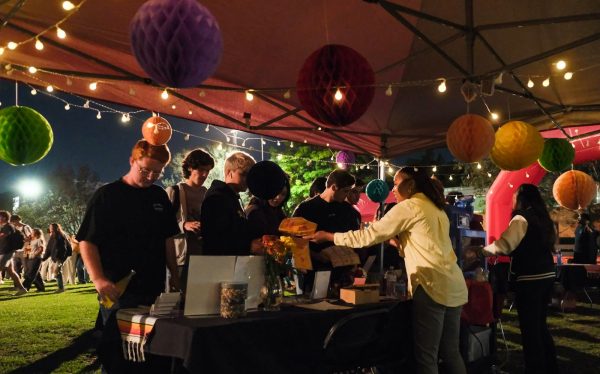
From a theological perspective, celebrating and honoring plays at the heart of community and unity as the body of Christ that is central to life at Biola. Biola’s Theological Statement on Diversity asserts that as members of the body of Christ, we each bring various spiritual gifts for the common good. Likewise, the Hispanic community has a wealth of spiritual gifts, lived experiences, and stories that contribute to the richness of Biola.
Furthermore, Fiesta Latina has served as a spearhead, helping to launch other celebratory events on campus for other minority groups. The event launched a greater movement of cultural appreciation and learning on campus, leading to the “minding of gaps” that exist in other minority students’ cultures and heritage.
“Fiesta Latina was the first of its kind. Night Market started coming up in the last three years … and who knows what will happen in years to come … The success of Fiesta Latina is what is also motivating the potential inclusion of new events because we see how much it really matters to the student population,” Propst stated.
OTHER SPACES DESIGNED TO HELP “MIND THE GAP”
I recognize and acknowledge the existence of different challenges and struggles within the Hispanic community. At the same time, Biola can further assist its Hispanic students find community, experiencing belonging and overcoming adversity by expanding the resources that already exist.
The Mosaic Collectives is an initiative run by Student Enrichment and Intercultural Development (SEID) that offers students of various ethnic and cultural backgrounds a space to explore how their Christian faith and their cultural/ethnic heritage impact and shape who they are and how they relate to the Biola community. It hosts a variety of events for students throughout the year.
For more information about meeting days and times, please visit their website or visit them in person at the Mosaic Cultural Center, located in Rose Hall across from Talbot East.
The Student Government Association (SGA) is an additional resource where students can share their experiences with Senators, who represent the various residence halls and commuters, and Executive board members. SGA members are available to help meet with students, learn about their experiences and advocate for their needs.
For more information, visit their website or visit them in person at their offices, located in the SUB.
FINAL REFLECTION
In a world full of division and hatred, it is hard to envision people of different cultures, languages and traditions coming together and celebrating their differences. But Biola is different. Our common love of God and neighbor distinguishes us from the world. For this reason, Fiesta Latina is more than just a cultural event. It truly brings together all parts of campus, all parts of the body of Christ, for the common purpose of celebration.
“That they also may be in us, so that the world may believe that you have sent me … that they may be one even as we are one, I in them and you in me, that they may become perfectly one, so that the world may know that you sent me and loved them even as you loved me.”
John 17: 20-23

